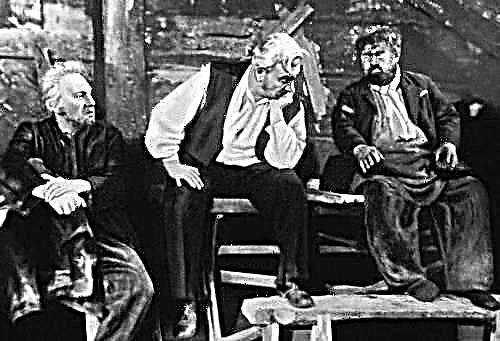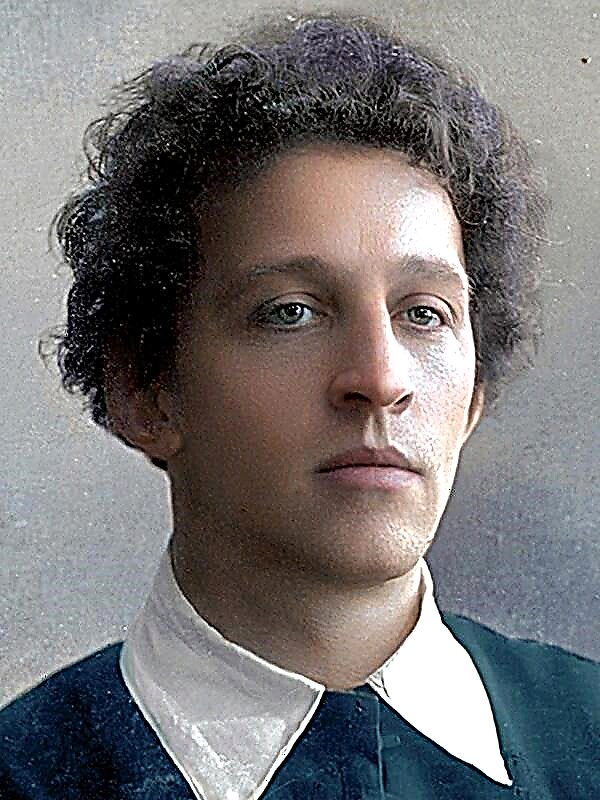In unpredictable market conditions, companies with the most serious training win
In 1911, two teams entered the polar race for the right to be called the discoverers of the South Pole. The team of Royal Amundsen was the first to reach the goal, set the Norwegian flag on a plateau and returned home safely. Robert Falcon Scott's team arrived there 34 days later. The defeat in the race was a tragedy, but the situation worsened on the way back. Scott's expedition members never returned home; they all died of cold and hunger.
Why did the team suffer such a dissimilar fate?
One of the main differences is the preparation for the expedition. Amundsen was obsessed with preparations for the upcoming Antarctic campaign. For several years he wandered around the world, collecting useful knowledge and experience. He learned from the Eskimos to survive in polar conditions, tried all possible food sources, including raw dolphin meat. Amundsen's team took with them a large supply of provisions in case of delays in the journey. They neatly marked all their stockpiles with black flags, clearly visible in the white snow. Amundsen could not have foreseen what awaits him in the Antarctic, but did everything possible to prepare his group as much as possible. He tried to minimize randomness.
Scott took with him several times less provisions than Amundsen, and in the event of an unforeseen delay, the British team was threatened with hunger. Scott preferred unverified technology, including snowmobiles, which in extreme conditions quickly failed. Lack of training, lack of knowledge, experience and supplies of supplies led to a lag behind the schedule, failure of the expedition and, as a result, to the death of the participants.
Amundsen and Scott were forced to operate in uncertain polar conditions. So modern companies are forced to exist in an unstable, constantly changing business environment. Do not let your success depend on external circumstances. Prepare yourself for various situations in order to survive and achieve remarkable results in any environment. The secret to success is to be prepared for any chance.
Companies that succeed in the face of uncertainty are distinguished by self-discipline, sound innovation and a paranoid desire for safety net.
No one can accurately predict what will happen in the coming months, years. In these uncertain conditions, some companies manage not only to survive, but also to achieve outstanding results. It is enough to analyze the features of the behavior of the companies of the 10X group (“tenfold”), extremely successful enterprises. Their indicators have long and steadily exceeded the industry average by at least ten times.
They actively accumulate knowledge and strengthen their material base. Provide readiness for any unexpected events and circumstances.
The main features of ten-time leaders:
- Fanatical discipline, sequence in actions and determination: outlining goals and methods for achieving them, they stubbornly adhere to the chosen path.
- Empirical creativity in decision making. They do not look at other people's opinions and generally accepted ideas, but look for really working solutions, determine when and in which areas they should take innovative steps, and rely on a solid empirical foundation.
- Productive paranoia prepares well for changes in a competitive environment. They are extremely vigilant, never relax, and always remember that circumstances can turn against them.They direct their fears into a productive channel, creating reserves and developing plans that will allow the company to prepare for difficult times.
Group 10X companies set goals and fulfill them regardless of environmental conditions
Roald Amundsen moved towards the South Pole, observing the most severe discipline and maintaining the same rhythm. Every day he covered the same distance, about 25 km, regardless of external conditions. If he saw that the weather and the terrain were favorable, then he walked the established distance, and then stopped to rest, even if the team was ready to move on. This allowed to save strength, so that even in bad weather and in difficult terrain, the team was able to continue the path and cover the intended distance. Such self-control allowed the expedition members to maintain a uniform transition rate.
This approach to achieving the goal is the concept of a “twenty-mile march” that helps 10X group companies succeed in an era of uncertainty. It is necessary to determine the performance parameters on the basis of which achievements will be evaluated (annual growth rate or level of innovation). Having set a benchmark, companies go to their goal, adhering to the plan and not departing from it in good and difficult times.
A company that voluntarily undertakes such obligations cannot relax: goals must be achieved, no matter how difficult. The established threshold of achievements cannot be crossed even in the most favorable conditions. Such an order is necessary, and it requires self-discipline, otherwise the company runs the risk of upsetting the balance and losing the ability to adapt to changing circumstances.
Example. AMD's electronics company nearly ruined itself in the 1980s, chasing fast success. Trying to achieve a growth rate of 60%, she got stuck in debt and found herself in a situation of shortage of funds when a crisis occurred in the industry. AMD lagged behind its competitors, including the company of the 10X Intel group, which during the same period maintained a more moderate but steady growth.
10X group companies introduce revolutionary innovation only if their feasibility is empirically proven
Show independence in decision making and creative approach to business. Some ten-timers (such as Apple) have become famous for continuous innovation. Revolutionary innovation is a key success factor for these companies.
10X group companies are innovating, but for them it's not an end in itself. They do not take reckless risk: they will not release revolutionary new products without first checking their market potential. First, you need to collect all possible empirical data and conduct a deep market analysis. Then adjust the direction of their innovations and take full advantage of the opportunities available.
The principle of "first bullets, then sweat." Companies of the 10X group first “target”: they test the market by introducing a number of low-cost and low-risk innovations. Once a promising target is set, they focus on it all the effort.
Example. In 2001, Apple developed a small MP3 player that is only compatible with Mac computers. The first iPod was notable for its low cost, low risk and did not distract the company's resources and employees' attention from the main product, Mac computers. The first sales data was encouraging, and Apple created the iTunes online music store, also designed only for Mac computers. Users liked the iPod, and they appreciated the ability to download music legally and for little money. Apple has accumulated enough empirical data to release iTunes and iPod for owners of other computers.
Innovation must be combined with the discipline of doing business
Innovation does not guarantee success. The company must innovate.Each industry has its own minimum necessary level of innovation, which enterprises must withstand in order not to lag behind competitors.
Example: In the field of information technology, the threshold of innovation is high. Products quickly become obsolete, firms are constantly investing in innovation. In the airline industry, the innovation threshold is low: there is no need to come up with new flight formats every month.
Exceeding the level of innovation does not bring special benefits. An enterprise that pays too much attention to innovation is losing control of the situation. By investing too many resources in revolutionary technological breakthroughs, you neglect key aspects of the business. The pursuit of innovation must be complemented by discipline. The company can be sure that all areas of business (production, marketing, finance) are given due attention.
Example. Intel overtook its rival Advanced Memory Systems (AMS), which proved to be a pioneer of innovation. Intel was diligently involved in all areas of the business - from innovation to production and sales - fanatically controlled costs and debugging of technological processes, guaranteeing customers timely delivery of products at the agreed price. AMS outperformed Intel in labs, but Intel won the market.
Companies of the 10X group are distinguished by “productive paranoia”: they fear the worst and manically prepare for this
Group 10X companies are always worried about the future. Even in prosperous periods, they ask themselves: “What if the situation in the industry changes? What will we do? Where will our new competitor come from? ” This paranoia encourages them to carefully prepare for any unforeseen situations.
The accumulation of liquidity reserves is a way of preparing for difficult times. The share of cash in the assets of these enterprises exceeds the average by 3-10 times.
Paranoia makes tenfolds extremely alert. They constantly look at the environment in search of potentially dangerous events:
- The emergence of new competitors
- Introduction of new legislation
- Change in financial conditions.
Competitive advantage lies in a deep understanding of their industry, manic training, as well as the ability to discern tipping points on the horizon and use them correctly.
Example. Due to the terrorist attack of September 11, 2001, the airline industry experienced a sharp decline. Southwest Airlines was able not only to survive in this chaos, but also to maintain profitability. The company even managed to expand the business by opening additional routes and offering customers new services. Southwest Airlines executives could not have foreseen the September 11 tragedy, but they had prepared in advance for a possible crisis - they had created a solid financial reserve that saved the company. Thanks to their deep market knowledge, they spotted new opportunities in the midst of disaster.
10X Group Companies Develop Long-Term, Specific Operating Rules - A Stable Formula for Success
In 1979, in the United States, after the adoption of the law on the deregulation of airlines, a lot of new airlines appeared in the industry. The head of Southwest Airlines (Group 10X) has compiled a list of ten operating principles that ensure success in rapidly changing environments. The list contained simple and specific precepts: "Only fly on Boeing 737 aircraft" and "Do not serve food on board."
Most of the list in 25 years has not changed. These rules constituted a clear and stable formula for long-term success. Passing the crisis, the company left this scheme, knowing that it really works.
These principles are specific, methodical and consistent, meet the criteria of SMaC (specific, methodical and consistent). The rules covered a number of issues, can be used for a long time and work in a variety of situations.
Tenfolds masterfully develop SMaC procedures and adjust them only in case of emergency. This constancy is the key to determination and confidence in success.
10X Group Companies Make Great Thanks to Hard Work and Ambition
You should not attribute success to the action of good luck or chance. Great leaders have no less and no more luck than everyone else. They are hardworking and ambitious. Ten-time leaders are able to get the best return on luck, extracting the maximum benefit from any opportunity.
Example. While studying at a private school, Bill Gates had a rare opportunity at that time to work on a computer. He caught the eye of Popular Electronics magazine with an article that inspired him to develop the first product. Gates left the university and moved to a distant state, where he could start developing a revolutionary new software product. He worked almost around the clock, forgetting about food and rest. Hard work and ambition helped him make the most of his luck.
The most important thing
The most successful companies do not allow chance to control their fate. They carefully prepare, make decisions based on reliable empirical data, and disciplinedly adhere to the plan both in good times and in bad ones. It is thanks to the combination of consistency in actions with empirical analysis that some companies demonstrate stable success in a chaotic modern world.
Neither luck nor fluke explains why some companies become great. All enterprises get the same amount of luck; the only difference is how they manage their chance.
How do some companies succeed in the face of uncertainty?
- In unpredictable market conditions, companies with the most serious training win.
- Companies that succeed in the face of uncertainty are distinguished by self-discipline, sound innovation and a paranoid desire for safety net.
By what methods are companies in the 10X group ahead of the competition?
- The companies of the 10X group set themselves the tasks and, year after year, disciplinedly fulfill them regardless of external conditions.
- The 10X group of companies introduces revolutionary innovations only if their feasibility is empirically proven.
- Innovation must be combined with the discipline of doing business.
- Companies of the 10X group are distinguished by “productive paranoia”: they fear the worst and manically prepare for this.
- 10X Group companies develop long-lasting and specific operating rules — a stable formula for success.
How do 10X companies get the most out of luck?
Companies of the 10X group are becoming great thanks to hard work and ambition.












